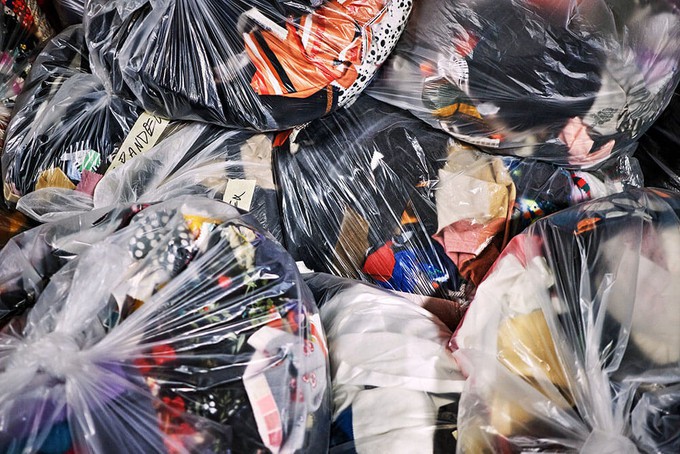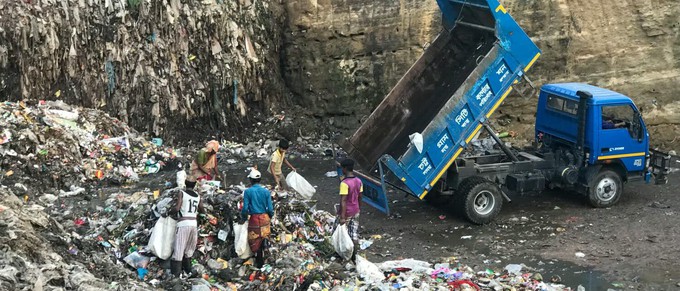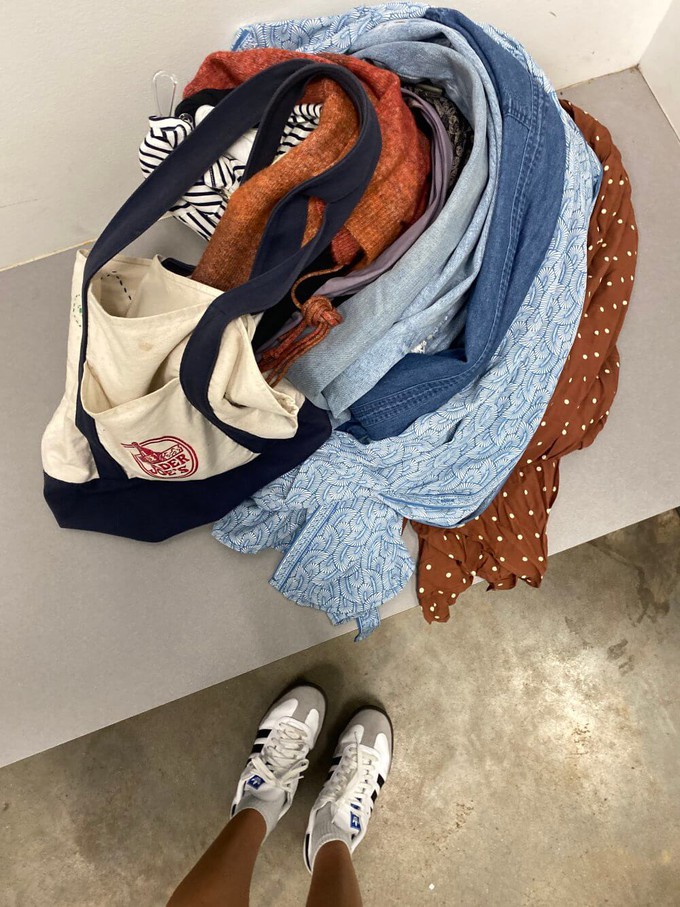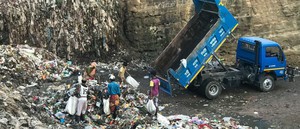- Clothes
- Bags
- Accessories
-
Inspiration
- Shoes
Kantamanto Market Fire: Exposing the "Donated Clothes" Scam

You might have heard of the fire that destroyed the Kantamanto market in Ghana at the start of 2025.
It also burned down the facade that used to hide the reality of the second-hand clothing trade in developing countries.
Now, the rest of the world has no excuses to pretend we don’t know what’s happening.
But if you’re an eco-conscious consumer who’s genuinely trying to make sense of it, I wrote this simple guide for you (especially if you were sold the lie that “as long as I donate my clothes, I’m doing something good for the planet and other communities”).
What’s the Kantamanto market fire?
Used by over 30,000 traders, artisans, and labourers, Kantamanto is the largest second-hand clothing market in West Africa.
Every week, it receives millions of what they call “obroni w’awu”—dead white man’s clothes. These are discarded garments from the Global North (so, countries with the highest economic and industrial development), especially from fast fashion brands like, H&M, Levi Strauss, Primark, and New Look.
Some of them are in such poor conditions that they’re disposed of straightaway. The other ones are repaired if needed and then resold, and they’re particularly popular because, given the cost of new clothing, it’s all many Ghanaians can afford.
Sadly, the new year started out tragically for Kantamanto, with a fire destroying 60% of its market.
Two people died, and thousands lost their livelihoods without the means to rebuild. Not only is that terrible per se: that fire also exposed the reality of the second-hand clothing market in Africa.
Sure, those traders could make money in the short term (peanuts, though), but while the market was often heralded as a symbol of resourcefulness, they were trapped in a system built on inequality and exploitment.
The reality of the “second-hand clothing” market in Africa

The Kantamanto market is an example of waste colonialism: when the Global North sends their waste to less affluent countries (and in many cases, the same ones they used to colonise).
You might be wondering why I’m suddenly talking about “waste” rather than “donated garments”. Well, because many of them are just that: garbage. And that’s not even the only problem.
Here are the main negative consequences of waste colonialism and the second-hand clothing market in developing countries:
- It’s waste disguised as donations – For example, Kantamanto used to receive 15 million garments every week, but 40% of them (so, almost half) were just waste. It doesn’t help that fast fashion clothes are literally designed as throwaway items: by the time they’re donated and sent there, they’re falling apart. Plus, traders aren’t usually allowed to open those huge plastic-wrapped bales of clothes before buying them. So, as well as essentially paying for rubbish, they also have to pay for its disposal
- Those clothes keep polluting the local environment – For example, synthetic ones shed microplastics that end up in bodies of water, and they can take 200 years to decompose in landfills, where they’ll also release toxic chemicals and methane. And if they’re burned, clothes release more toxic substances and greenhouse gases
- They pose health risks – The Kantamanto fire is proof that those markets aren’t the safest, but those huge quantities of clothing waste pose additional risks, too. For example, they often obstruct local sewage systems. This causes floods during monsoon season and contributes to mosquito breeding, spreading diseases like malaria
- They ruin local economies – This ongoing influx of cheap second-hand clothes has made it incredibly difficult for local artisans and textile companies to compete
- These markets thrive on modern slavery and child labour – Most of those traders haven’t got the means to break free from that low-paying life. Plus, as well as working behind the stalls, children—including young girls as young as 9—are forced to carry heavy bales of clothing on foot (and we’re talking about +50 kg!)
Up until recently, this dark truth was hidden behind a vibrant facade: markets like Kantamanto were portrayed as resourceful and empowering hubs for locals, and most consumers thought that, by donating their fast fashion hauls, they were sending their clothes directly to people who needed them.
In reality, the second-hand clothing industry has been reinforcing the inequalities between the Global North and South.
So, what can we do about the second-hand clothing industry in developing countries?

We need urgent systemic change in the second-hand clothing industry, and I believe it must come from bigger organisations and new legislation. But I’m also confident that, in the meantime, we can all do our part:
- Consider donating to support Kantamanto traders and the rebuilding of the market – This is the best fundraiser I could find
- Change your mindset around “donating clothes” – It’s easy to think they’re going to be resold in our home country, but unfortunately, 70% of donated clothes end up in Africa and the rest of the Global South (and now you know what happens when they get there). So, instead of seeing “donating my clothes” as “a good thing to do regularly”, try and think of it as a last resort. And when you do that, choose shelters and reputable local organisations, or consider gifting them to friends who’d genuinely make the most of them
- Buy less and more mindfully – Rethink, Refuse, and Reduce are the first and most important R’s of sustainability for a reason. So, rather than chasing trends and rotating your clothes every month, consider investing in fewer but higher-quality and more timeless garments that were made ethically and that match your style (the kinds you can see yourself re-wearing for years, pairing them up in creative ways to build different outfits). Don’t worry: after the initial period of adjustment, it doesn’t have to feel limiting! In fact, here are some tips to stop buying clothes you don’t need, and you can find hundreds of sustainable brands right here on Project Cece
The Kantamanto market fire was an awful tragedy, but it shone a light on an even bigger issue: the curse of waste colonialism. Let’s stop fuelling it.
Share our story
Related articles
Waste Colonialism in Fashion: Is Your Wardrobe Supporting It?
If you donate clothes to make up for your hauls, the chances are… they end up in Africa! Discover how textile waste colonialism works and how you can help.
No, Donating Clothes Won't Make Up for Fast Fashion Hauls!
“It’s fine: I’m giving them to charity! If that’s how you’ve been justifying your hauls, we have bad news. Here’s what happens after donating clothes.
How to Declutter Your Wardrobe & Make it More Sustainable
More isn’t always better! Let us show you how to declutter your wardrobe and make it more sustainable with fewer high-quality pieces that really match your style.
Project Cece is a platform that collects ethical fashion from vetted brands and shops in one place. Browse ethical fashion for women and men and find items that fit your style, budget and values!
_large.png)


